While historians trace the roots of India-Vietnam relations to the 2nd Century AD, modern day association commenced four decades ago in 1972. There has been an upward trajectory of engagement in all spheres thereafter be it political, economic, trade or defence and security. This is reflected in the increasing congruence of views in multilateral forums such as ASEAN, East Asia Summit, Mekong Ganga Cooperation, Asia Europe Meeting (ASEM) besides UN and WTO where the two nations are speaking in one voice.
In recent years, both countries have recognized the importance of strategic engagement against the backdrop of evolving geo-political architecture in the Indo-Pacific Region (IPR). This is dictated by China’s emergence as the largest economy in Asia supplanted by increasing aggressiveness in asserting self dictated, “core interests.” These include territorial claims across land and maritime frontiers which has resulted in clashes with neighbours as India and Vietnam. Seen against the history of wars between China and India as well as Vietnam, the alliance between the latter may seem natural. Yet such partnerships take time to fructify and have to be nurtured with patience indicating the necessity for continued investment in expanding the many tracks of India-Vietnam relations. A brief overview of India Vietnam relations with prospects for the future is undertaken as per succeeding paragraphs to include the strategic geography,
The Strategic Geography of Relations
In the emerging polycentric world, strategic geography rather than physical proximity dictates bilateral and multilateral engagement. Strategic geography essentially comprises of two factors - core interests and values. India and Vietnam have a perfectly balanced strategic geography with compatible core interests related to national sovereignty, integrity and inclusive growth of its people. The core value of autonomy creates the necessary glue for a strong partnership.
This is reflected in the legacy of India -Vietnam relations through the years. India has supported aspirations of the Vietnamese people be it for independence from France in the 1950’s or against American intervention in the 1960’s. This support was given despite Vietnam having aligned with Maoist China in the 1962 conflict with India. Delhi has recognized the significance of Hanoi as a bulwark of resistance to domination of great powers in the region. The 1979 war with China was a reminder of the resolve of the Vietnamese people to withstand threats to sovereignty and integrity of their homeland. For an India which had been chastened during the War of 1962 with China, this was an example of how perceived weakness could be turned to military advantage by exposing weaknesses of the adversary. The myth that the Chinaman was ten feet tall was broken by the Vietnamese. Vietnam’s military credentials have thus added to its significance as a military partner.
The strategic convergence between India and Vietnam can be envisaged in the Kautilyan paradigm of a natural alliance with the neighbor’s “neighbor”. Today this union is reflected in many spheres. Politically India and Vietnam have been cooperating extensively. Moreover, Hanoi has convinced New Delhi of the need to play a greater role in the region over a period. India is thus seen as a balancer in the Western Pacific in the future with a footprint offshore in the Vietnamese littoral in the form of exploration by ONGC Videsh Limited (OVL). The aim is to subtly support rights of a strategic partner while also expanding own energy and economic interests. India also understands the limits of such an engagement and thus soft pedals the same rather than aggressively proclaiming intent to play a dominating role in somewhat hostile waters.
Vietnam also has a major role to play in India’s Look East Policy (LEP) which has now fructified with recognition of New Delhi as a strategic partner in ASEAN and increasingly important role that India is playing in East Asia Summit (EAS). Of the six priority areas of regional cooperation within the framework of the EAS – energy and environment, finance, education, natural disaster management, pandemics and connectivity, India and Vietnam have established a framework for engagement in each one.
One of the most important tracks is maritime security. India’s Prime Minister, Dr. Manmohan Singh highlighted the same at the 8th EAS in Brunei Darussalam when he stated, “A stable maritime environment is essential to realize our collective regional aspirations. We should reaffirm the principles of maritime security, including the rights of passage and unimpeded commerce, in accordance with international law, and peaceful settlement of maritime disputes”.
Vietnam plays an important role in this framework not because it is a party to a dispute with China but will remain the fulcrum of a solution wherein implementation of the collective commitment to abide and implement the 2002 Declaration on the Conduct of Parties in the South China Sea will be dictated by the commitment of important littoral states such as Hanoi. Adoption of a Code of Conduct in the South China Sea on the basis of consensus will have a major impact on Vietnam. It is natural that Hanoi is looking for support from New Delhi in this sphere while India is committed to stand by the rights of freedom of the seas for global trade and commerce.
India has at no time sought to intervene in the ongoing differences in the South China Sea between China and Vietnam. The statement by India’s Vice President Mr Hamid Ansari, a well respected former envoy is relevant. On a question whether China has raised objections to India’s oil and gas exploration, Mr Ansari stated, “Not as far as our oil exploration is concerned. There is an ongoing problem between the People’s Republic of China and the Socialist Republic of Vietnam about the sea boundary. That is something on which the whole world is concerned because it will have impact on the movement of shipping lanes, trade, everything”. Mr Ansari, however, highlighted India’s commitment to freedom of the seas and international waters thus, “Our view on that has always been that it has to be settled within the framework of existing international norms, has to be settled peacefully through negotiations.” This balanced approach has found many takers in South East Asia and is reflected in the eagerness for partnering India where Vietnam has established the lead.
Protection of India’s trade and commerce has also dictated increased interaction with Vietnam. India’s forays in the Asia Pacific region what some as the Japanese Prime Minister has called as the Indo Pacific are now well established. India already has a dominating position in the Indian Ocean Region with the peninsula flanked by the island territories of Lakshadweep in the west and Andaman and Nicobar in the East providing maritime dominance. Vietnam provides the springboard for operating in the Western Pacific.
Some have likened these recent developments as India’s own Asia Pacific rebalancing on cue from the United States though New Delhi has been committed to the region for over two decades now under the Look East Policy (LEP) framework. This includes an overall strategic architecture of bilateral and multilateral engagements in the region that India is building over the years which includes the main regional players China and Japan, the resident power United States of America and regional pivots as Vietnam, Indonesia and Australia. Of these, India -Vietnam relations remain the strongest with highest common interests and thus need to be nurtured over a period.
The mechanisms to build the strategic geography which have been created over a period include a Joint Commission Meeting at the Foreign Ministers' level and Foreign Office Consultations and Strategic Dialogue at Secretary-level which provide the larger framework for bilateral cooperation in various areas. There is an annual Defence Dialogue at Defence Secretary Level and a Joint Committee on Science and Technology which meets periodically. India-Vietnam Joint Working Group on Educational Exchange was set up in 2012 thus meeting virtually all sectors of engagement with effective institutional framework and support.
Defence and Security
Defence and security remains a key track of India -Vietnam relations. The formal structure of India -Vietnam defence relationship is based on the protocol on defence cooperation signed by India’s then Defence Minister Mr George Fernandes on a visit to Vietnam in 2000. This established an institutionalised framework between defence ministers, joint naval and coast guards exercises and training of pilots by the Indian Air Force. This was further strengthened by the 2007 Strategic Partnership Agreement which now provides the framework for furtherance of cooperation in the defence field. Some of the key facets of defence cooperation include strategic dialogue, high level bilateral visits, and training of personnel, defence production, sharing of intelligence and joint exercises.
Regular annual strategy dialogue includes discussion on various facets related to common threat perceptions and progress of ongoing programmes apart from sharing of information and intelligence. The 7th Vietnam-India Defence Strategy Dialogue was held in New Delhi, India, on September 26th 2012, with attendance of delegations from the Vietnamese Ministry of National Defence, led by Deputy Minister Senior Lieutenant-General Nguyen Chi Vinh, and the Indian Defence Ministry, led by Deputy Secretary Shashi Kant Sharma. The 8th Round was held on 8 November co-chaired by Vietnamese Deputy Defence Minister Nguyen Chi Vinh and the Indian Defence Secretary Radha Krishna Mathur in Ho Chi Minh City.
This is supplemented by high level visits at the level of ministers and military chiefs. Visits by Vietnamese military commanders to India are common. Most recently Vietnam’s Vice Minister of National Defence and Chief of General Staff Senior Lieutenant General Da Ba Ty was in Delhi in September 2013. Ty headed a 14-member delegation and met Indian Air Force chief Air Chief Marshal N A K Browne, who is also the chairman of the Chiefs of Staff Committee. “The meeting saw issues such as enhanced defence cooperation, capacity building, joint projects and training being discussed, besides a review of the growing Vietnam-India defence relationship,” a release from the Ministry of Defence said.
Earlier, Indian Navy Chief Admiral D K Joshi was in Vietnam in November 2012 which was one of the first nations to be visited by him after taking charge. Port calls by Indian Navy’s Eastern Fleet to Vietnam amongst other countries in the region have now become common. India’s Eastern fleet commander Rear Admiral P Ajith Kumar led a month long voyage with frontline ships such as the INS Satpura, INS Ranvijay, INS Kirch and INS Shakti, the fleet tanker in May and June 2013. Indian naval ships have also been provided permanent berthing facilities at Na Thrang port in southern Vietnam. Notably India is the only country to have been provided this facility. The provision of berthing facility provides the Indian Navy considerable assistance in operating in the Western Pacific.
In the field of military technical cooperation, India has much to offer to Vietnam. With commonality of inventory of military equipment, India has been providing critical spares and ancillaries to Vietnamese ships, submarines and aircraft. In addition, servicing and maintenance of military equipment as well as ports have been organized from time to time.
While analysts may lament the poor potential of India’s defence industry, it can meet the requirements of strategic partners in the region. Thus of late efforts have been made by the Ministry of Defence to project the same in the South East Asian region. Vietnam has been quick to recognize the prospects and there are many tracks of cooperation in this sphere. India has offered a $100 million credit line to Vietnam to purchase military equipment, a proposal that is unique to that country. This is to be used for purchase of patrol boats from India to explore for oil in an area falling in China’s “nine dotted line,” zone of influence.
In training, a number of joint activities have been carried out from time to time including attending courses of instructions at the various academies, training of pilots, joint exercises between the Navy and the Coast Guard and so on. Training in maintenance and repair of major equipment is also being provided by India. Most importantly in September 2011, training on submarine operations by India was agreed upon with common Kilo class platforms held by both the countries. An area of increasing focus is training in United Nations' peace-keeping operations where Vietnam is expecting to take the advantage of India’s vast experience in this field
Soft Power Engagements - Economy, Education Et Al
The potential in the field of economy and trade is growing though at present it is comparatively modest. As per Vietnamese Government data, total trade volume touched US$ 3.94 billion in 2012 and US$ 2.45 billion during the first five month of 2013. Export by India reached US$ 1224.89 million, up 31.48 percent while export by Vietnam was US$ 1021.07 million, up 73.16 percent. Given these developments, the bilateral trade target at US $ 7 billion by 2015 set during the visit of President Sang to India in October 2011, does not seem within range and more will have to be done towards achieving the same.
While mechanisms as India-Vietnam Business Forum were established in April 2010 and have provided a platform to strengthen business exchanges from both sides, investments remain low despite the tremendous potential. Thus as of June 2013, according to the figures from Vietnam's Foreign Investment Agency, India has 73 investment projects with total registered capital of US$ 252.21 million. If investments by Indian companies from third countries are included, India has 68 valid projects with an estimated total investment capital of US$ 936.23 million. Indian companies are mainly investing in oil and gas exploration, mineral exploration and processing, sugar manufacturing, agro-chemicals, IT, and agricultural processing as per the Ministry of External Affairs.
A promising development is the plan by Tata Power to develop US$ 1.8 billion Long Phu-II Thermal Power Plant in Soc Trang. It will be the single largest Indian investment in Vietnam when it comes through and will give a strong boost to economic cooperation and strategic partnership. The contract was won in the face of stiff competition from South Korea and Russia and has pitch forked India into the prime league of investors in Vietnam thus indicating scope for aggressive marketing of Indian large project implementation capacity. Here the strategic framework provides an excellent back drop as Vietnam would rather engage with Indian companies which have spin offs in bilateral relations further strengthening bonds of cooperation.
India is suitably exploiting the potential of Information Technology education in particular with companies such as NIIT, APTECH and Tata InfoTech opening more than 80 franchised centers spread all across Vietnam. Vietnam has also been a large recipient of training programmes under Indian Technical and Economic Cooperation (ITEC) programme. Presently, 150 ITEC slots are being offered to Vietnam every year along with 16 scholarships under the General Cultural Scholarship Scheme (GCSS), 14 scholarships under the Educational Exchange Programme (EEP) and 10 scholarships under the MGC Scholarship Scheme as per the Ministry of External Affairs.
A US $ 2 million Advanced Resource Centre in Information and Communications Technology (ARC-ICT) was inaugurated in Hanoi in September 2011. The Centre has been set up by CDAC and trains students and Government officials in various areas such as web designing, network systems, Java, GIS applications and e-governance. Augmentation of high performance computing in Vietnam signed by two sides for a Rs 4.7 crore grant project is being executed by CDAC and involves installation of a 16-node cluster HPC facility at the Hanoi University of S&T and capacity building. The project is in final stages of completion.
India has also set up the Vietnam-India Center for English Language Training in Danang and the Vietnam-India Entrepreneurship Development Centre in Hanoi as part of its support to the Initiative for ASEAN Integration providing technical assistance to the Government of Vietnam. A new Vietnam-India Centre for English Language Training at the National Defence Academy of Vietnam is also on the cards. Both sides have also agreed to consider setting up a Vocational Training Centre in Ho Chi Minh City. A proposal to set up a Centre for Tracking and Data Reception and an Imaging facility in Vietnam under ASEAN-India Cooperation mechanism is under consideration. The Centre will be fully funded by India and ISRO will be the implementing agency. It will utilise data provided by Indian remote sensing satellites and harness it for multiple developmental applications as per details provided by the Ministry of External Affairs.
India has underpinned this support by aid and assistance and since 1976 India has extended 16 Lines of Credit (LOC) totaling about US$ 145 million to Vietnam. The 16th LoC for US$ 45 million for Nam Chien hydropower project, executed by BHEL, is on the verge of completion. The 17th LOC of US$ 19.5 million for 2 projects (Nam Trai-IV Hydropower project and Binh Bo Pumping station) was signed in July 2013 during the 15th JCM meeting.
Prospects and Way Ahead
A review of Indo-Vietnam relations will reveal that prospects of cooperation remain substantial as there is strategic congruence between the countries. At the same time, India downplays significance of relationship vis a vis China thus ensuring that sensitivity of Beijing is not overly affected due to growing proximity of India and Vietnam. Vietnam on the other hand is more explicit. For instance, Vietnamese Deputy Prime Minister Mr. Vu Van Ninh in a media interaction in India on 09 January 2013 stated in relation to India Vietnam security relations, “we are committed to maintaining peace, stability, security, safety, freedom of navigation over the seas, and also access to resources in the East Sea of Vietnam. We are committed to avoiding violence or threatening to use violence in resolution of disputes in the sea. We would want to have peaceful negotiations based on international law especially the 1982 UNCLOS, the six-point principle of ASEAN, ……..”. The Indian side was somewhat ambivalent and remains circumspect
In the future, potential for defence sales needs to be exploited. While there have been reports of Vietnamese requests for Indo Russian joint missile BrahMos, India is likely to offer an alternative Pragati, developed from the surface to surface indigenous ballistic missile Prahaar. Pragati was displayed during the defence exhibition in Seoul ADEX 2013 in October 2013 and had generated considerable interest. India’s participation in ADEX with a large contingent of the DRDO provides impetus for greater engagement with Vietnam as New Delhi seems to have shed off its long standing inhibitions on defence exports
There is however, “supply side,” challenges in the relations even though India has accorded visa-on-arrival facility for Vietnamese nationals with effect from 1 January 2011; there are no direct flights between India and Vietnam. Vietnam Airlines and Jet Airways signed a MoU in October 2011 on comprehensive cooperation which includes commencing direct flights in the near future. A revised Air Services Agreement has been finalized and is awaiting signatures. Similarly, the ability of Indian companies to deliver projects in a highly competitive environment needs consideration. Overcoming these bottlenecks will be necessary to expand the engagements in the economic field.
Conclusion
India -Vietnam strategic relations are likely to maintain momentum that has been gathered over the past decade plus. As India expands its profile in East Asia and the Western Pacific, Vietnam with its advantageous geographic position in the region will be a profitable partner. However, this relationship is not likely to be at the cost of continued betterment of ties by both the countries with China. As the cliché goes, there is enough space for both India and China in Asia with mutual cooperation with other states such as Vietnam. The forthcoming visit of the Secretary General of the Vietnam’s Communist Party to India is a good opportunity for both the nations to impart further momentum to their relationship.
(The author is a Delhi-based Strategic Analyst)
Published Date: 13th November 2013, Image source: http://carimg.sulekha.com

 Rahul Bhonsle.jpg)


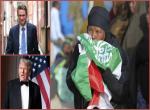
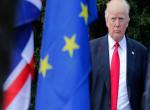
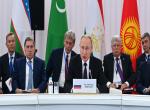
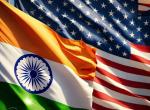
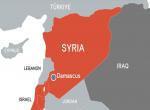

Post new comment